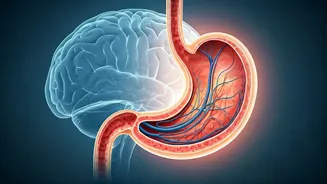Immediate Emotional Responses
The moments following a traumatic experience are often characterized by a surge of intense emotions. Individuals may initially feel a sense of profound
shock and disbelief, struggling to process what has just occurred. This can manifest as a feeling of numbness, where the mind seems to detach as a defense mechanism against the overwhelming nature of the situation. Alongside shock, there might be a wave of fear, anxiety, and a sense of impending danger. Some people may display outward signs of distress, such as crying, trembling, or appearing visibly shaken. Alternatively, others might withdraw, becoming quiet and introverted. These responses are natural reactions to extraordinary circumstances, highlighting the brain's efforts to cope with the influx of information and the need to protect itself. It is crucial to remember that these immediate reactions vary widely from person to person, influenced by individual personalities, previous experiences, and the nature of the trauma itself.
Delayed Emotional Reactions
While the immediate emotional responses are potent, the long-term emotional impact of trauma can manifest in a variety of ways, sometimes appearing long after the event. Individuals might experience persistent feelings of sadness, anxiety, or anger that linger long after the initial shock. Flashbacks, intrusive thoughts, and nightmares connected to the event can be common, disrupting sleep and overall peace. Some individuals develop hypervigilance, constantly scanning their environment for perceived threats, while others may experience avoidance behaviors, actively trying to sidestep anything that reminds them of the trauma. These reactions are signs that the individual's mind is still working through the trauma, attempting to process and integrate the experience into their life narrative. The delayed reactions emphasize the complex nature of trauma recovery and the importance of acknowledging the emotional toll the event has taken.
Seeking Professional Support
The journey of healing after trauma may involve seeking professional assistance from mental health professionals. Therapists and counselors can offer a safe space for processing the traumatic event and developing coping strategies. Cognitive Behavioral Therapy (CBT) and Eye Movement Desensitization and Reprocessing (EMDR) are among the evidence-based therapies frequently used to help individuals navigate trauma-related emotions. The decision to seek professional support is a personal one, and it's essential to recognize that it doesn't indicate weakness; instead, it is a proactive step toward recovery and mental well-being. Finding a therapist with whom you feel comfortable and understood is crucial for establishing a trusting therapeutic relationship. This kind of professional guidance provides individuals with the tools and support needed to heal from trauma and build a resilient approach to life.
Building Resilience Strategies
Alongside professional support, building personal resilience strategies can play a major role in the healing process. Practicing self-care activities, such as getting regular exercise, eating nutritious meals, and ensuring sufficient sleep, becomes incredibly important for overall well-being. Engaging in relaxation techniques, such as deep breathing exercises, mindfulness meditation, or yoga, can help manage stress and anxiety. Maintaining social connections and seeking support from friends and family members is also important. Connecting with others, sharing experiences, and finding a supportive network can provide a sense of belonging and reduce feelings of isolation. Setting realistic goals, celebrating small victories, and practicing self-compassion are vital. It's important to remember that healing from trauma is a process, and it's okay to experience setbacks along the way. Be patient with yourself, celebrate your progress, and continue to prioritize your mental and emotional well-being.










